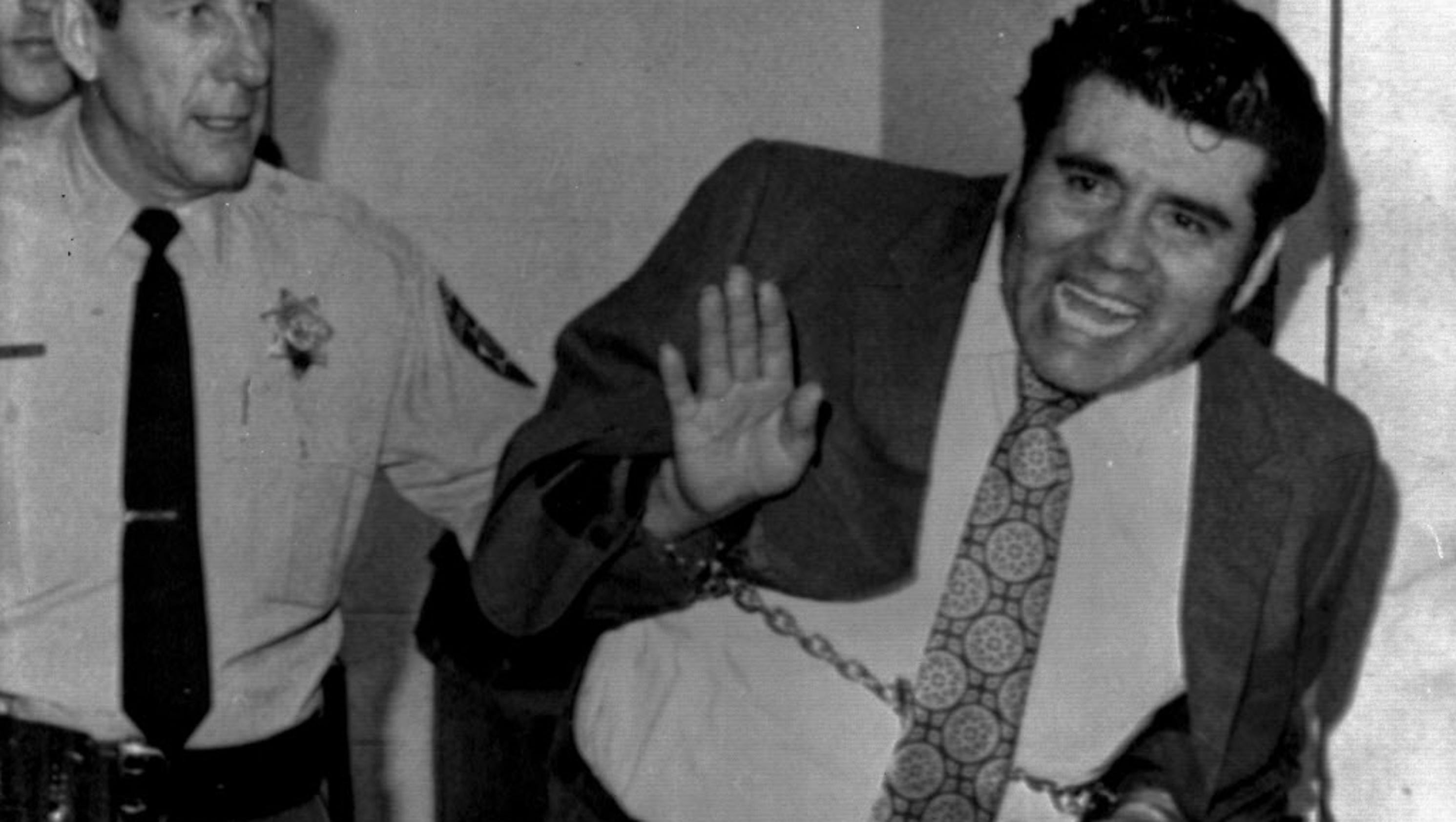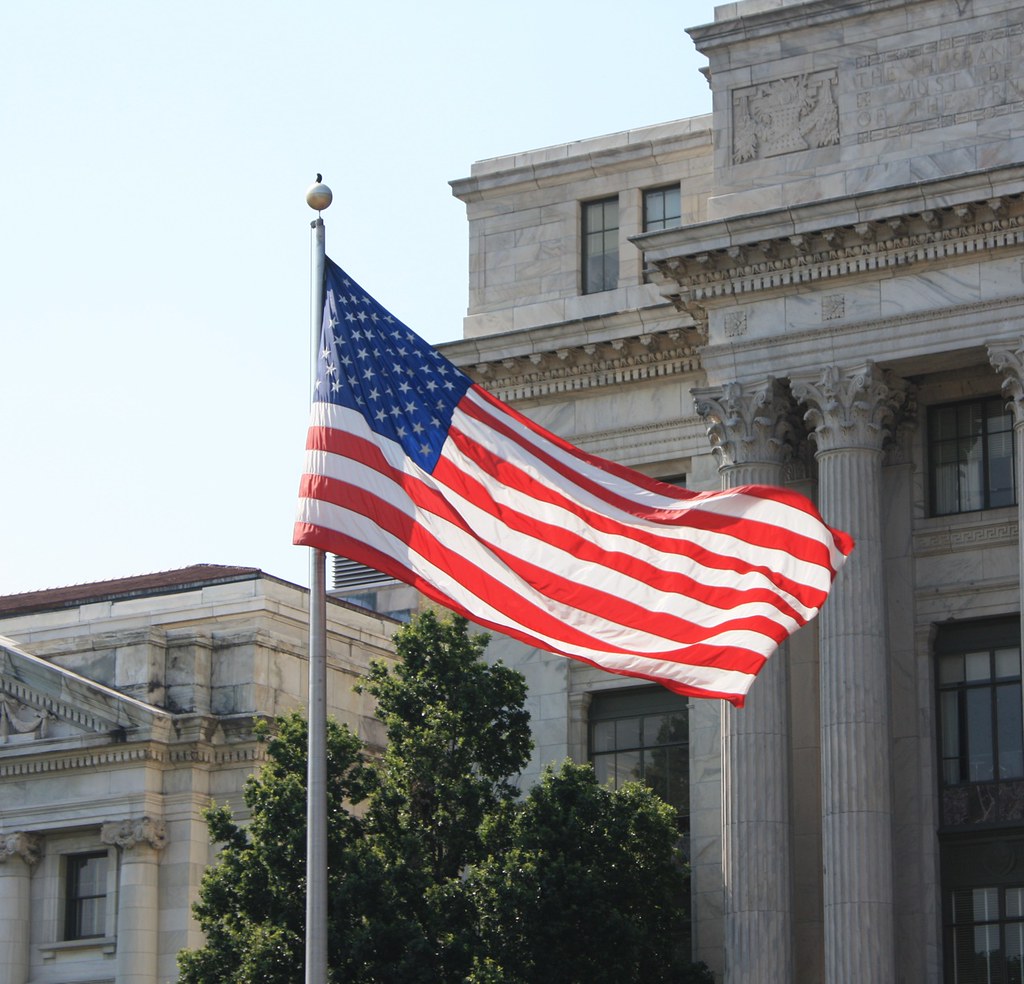
The United States is a land rich in history, with each state contributing its own unique stories to the nation’s tapestry. From the founding of the country to modern-day milestones, certain states stand out for their concentration of historic events. This article explores the states that have played pivotal roles in shaping America’s past and present, highlighting their most significant moments and their lasting impact.
Indeed, over the course of nearly 250 years of U.S. history, every state has played a role in shaping the nation into what it is today. While each state has left its own imprint on American history, in all 50 states, one event stands out as the most pivotal within its borders. Many of these events have had far-reaching impacts beyond state lines, with significant consequences for the nation and, in some cases, the world.
Identifying a single crucial event for each state can be subjective, but it serves as a powerful catalyst for discussion and understanding. We invite you to join us on an educational journey as we uncover these defining moments, drawing on well-researched historical accuracy to make complex events accessible and compelling. Prepare to delve into the rich narrative of America, one state-shaping event at a time.

1. **Massachusetts: Ignition of the American Revolution (1773)**
Massachusetts is often called the cradle of American liberty, and for good reason. It was here that the Boston Tea Party of 1773 ignited the flames of revolution, a daring act of defiance by citizens protesting British taxation without representation. This pivotal event, where colonists dumped crates of tea into Boston Harbor, served as a powerful symbol of colonial unity and resistance against perceived tyranny.
The Boston Tea Party was not an isolated incident but a critical flashpoint that directly led to the American Revolutionary War. Following this event, tensions escalated rapidly, bringing Massachusetts to the forefront of the burgeoning conflict. The state also became home to other critical early confrontations, such as the Battle of Bunker Hill, further solidifying its role in the fight for independence.
The legacy of Massachusetts’s revolutionary fervor endures today. Visitors can walk the Freedom Trail in Boston, a 2.5-mile route connecting 16 historically significant sites, including Paul Revere’s House and the Old North Church. These landmarks serve as tangible reminders of the sacrifices and ideals that birthed a nation, keeping the spirit of independence and progress palpable for all who visit.
Massachusetts’s contributions extended beyond the battlefield; its intellectual and political leaders laid much of the groundwork for American self-governance. The state’s early commitment to democratic principles and individual liberty set a profound precedent. This unwavering dedication continues to inspire, showcasing why Massachusetts remains a must-visit for history enthusiasts seeking to connect with America’s origins.
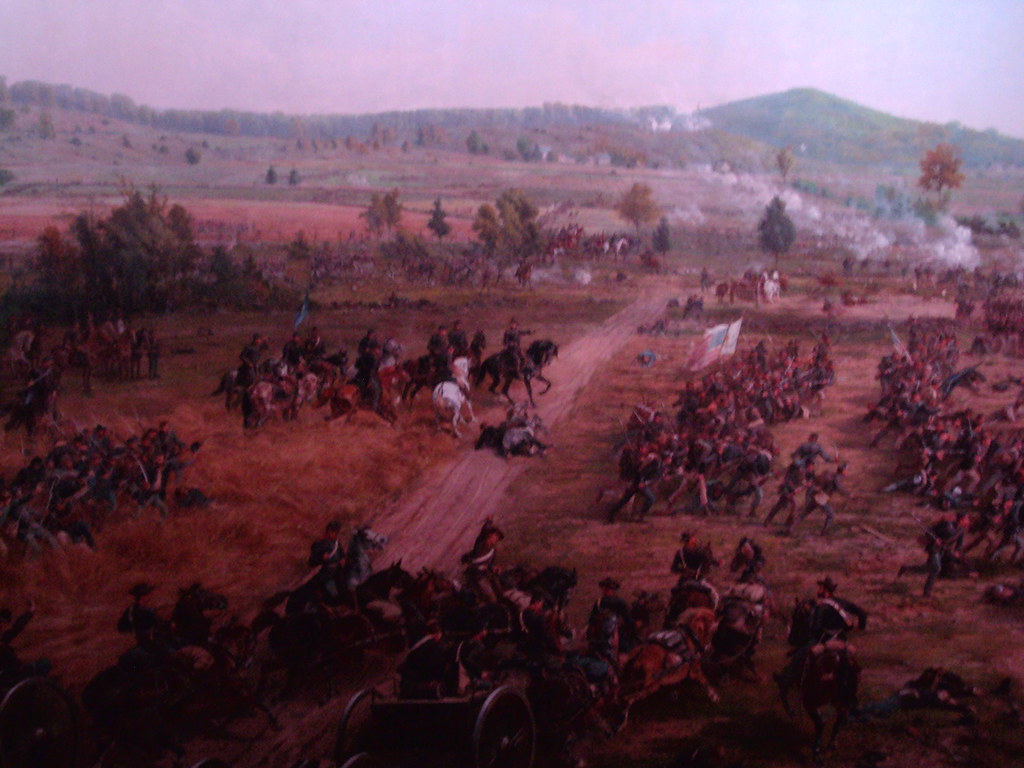
2. **Pennsylvania: Battle of Gettysburg (1863)**
Pennsylvania’s role in American history is unparalleled, extending from the founding of the nation to its greatest internal conflict. While Philadelphia served as the nation’s capital during the Revolutionary War, it was the small crossroads town of Gettysburg that became the stage for a critical turning point in the Civil War. The Battle of Gettysburg, fought in July 1863, was one of the bloodiest and most decisive engagements of the entire conflict.
In this brutal encounter, Robert E. Lee’s invading Army of Northern Virginia sustained a defeat so devastating that it sealed the fate of the Confederacy and its “peculiar institution.” The Union victory, under Major General George G. Meade, effectively ended Lee’s second invasion of the North and severely crippled the Confederate war effort. It marked the high-water mark of the Confederacy, after which its eventual defeat became increasingly inevitable.
Just months after the battle, President Abraham Lincoln delivered his iconic Gettysburg Address on the battlefield, transforming the site into a symbol of national unity and resolve. In his address, Lincoln eloquently redefined the purpose of the war, emphasizing human equality and the preservation of democratic government. His words resonate as a timeless testament to the nation’s founding principles and the sacrifices made to uphold them.
Pennsylvania’s historical significance is complemented by its vibrant cultural scene, with numerous museums and reenactments that bring history to life. The state’s enduring commitment to the foundational documents drafted within its borders, combined with the hallowed grounds of Gettysburg, ensures its place as a beacon of democracy and cultural richness. Its role in both forging and preserving the Union is truly invaluable.

3. **Georgia: Trail of Tears (1831)**
Georgia’s history is deeply intertwined with both the aspirations of a young nation and the tragic consequences of its expansionist policies. Among the most sorrowful chapters is the forced removal of Native Americans from their homelands, an event collectively known as the Trail of Tears. This harrowing period, beginning around 1831, profoundly impacted several Southern states, with Georgia at its painful epicenter.
The Trail of Tears represents a series of forced displacements of approximately 60,000 Native Americans of the Cherokee, Muscogee (Creek), Seminole, Chickasaw, and Choctaw nations between 1830 and 1850. In Georgia, the Cherokee Nation had long held lands, but these were coveted by white settlers, especially after the discovery of gold. Despite Supreme Court rulings affirming Cherokee sovereignty, state and federal actions led to their brutal removal.
This tragic event highlights a dark side of early American history, where the pursuit of land and resources often came at the expense of indigenous rights and lives. The report mentions that “Many of the events on our list are tragic, including the forced removal of Native Americans from their lands — the Trail of Tears in the South.” It underscores how “In the case of several states, fighting between white settlers and Native Americans ranked as the most important historical event.”
The treatment of indigenous people shaped America in many ways, and often occurred in frontier states. The forced march, characterized by disease, starvation, and exposure, resulted in the deaths of thousands. Georgia’s central role in the legislative and practical implementation of these removals left an indelible stain on the state’s and nation’s conscience, serving as a powerful, somber reminder of past injustices and the enduring legacy of dispossession.
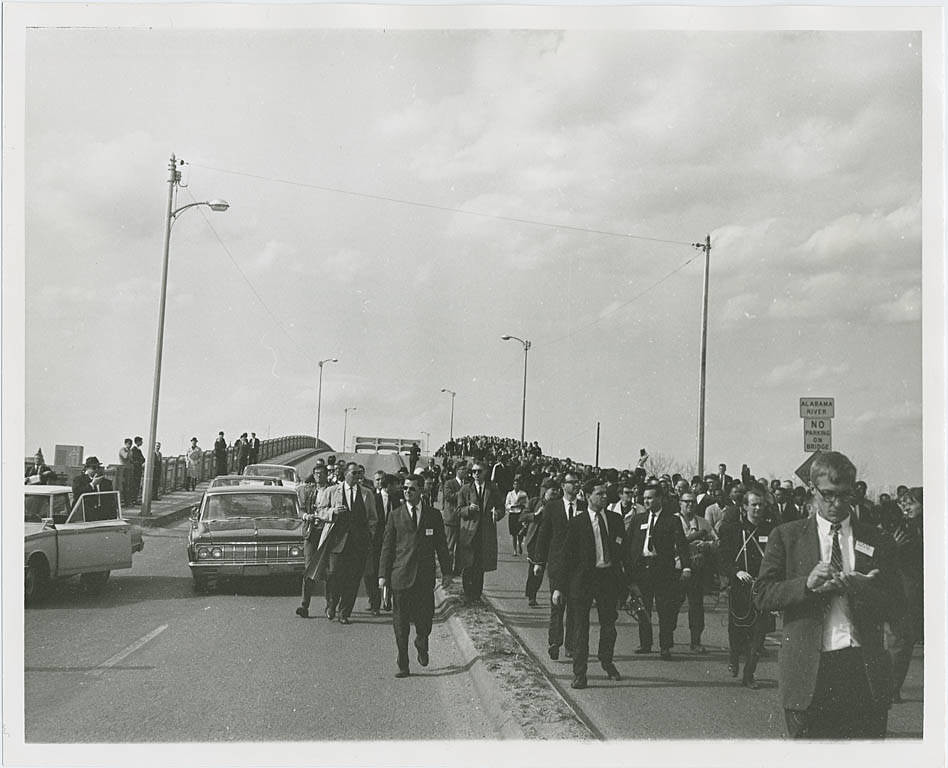
4. **Alabama: Selma-to-Montgomery March (1965)**
Alabama stands as a powerful symbol in the narrative of the American Civil Rights Movement, particularly remembered for the Selma-to-Montgomery march in 1965. This series of protest marches was a crucial effort to register African American voters in Alabama, where discriminatory practices like poll taxes and literacy tests systematically disenfranchised Black citizens despite constitutional guarantees.
On March 7, 1965, the first attempt at the 54-mile trek from Selma to Montgomery became known as “Bloody Sunday.” Marchers, advocating for voting rights, were brutally attacked by local police and state troopers on the Edmund Pettus Bridge. The violence, captured and broadcast on national television, horrified the nation and galvanized public opinion, exposing the stark realities of racial injustice in the South.
The widespread outrage spurred federal intervention and renewed determination among civil rights activists. Eventually, with court orders and the protection of the Alabama National Guard and federal troops, the marchers successfully completed their journey to Montgomery. This triumph underscored the power of nonviolent protest and political will, even in the face of violent opposition.
The Selma-to-Montgomery march had a direct and profound legislative impact. That August, just months after the march concluded, Congress passed the Voting Rights Act of 1965. This landmark legislation outlawed discriminatory voting practices, guaranteeing the right to vote for African Americans and fundamentally transforming American democracy. Alabama’s central role in this struggle remains a testament to the courage of those who fought for equality and the nation’s capacity for reform.
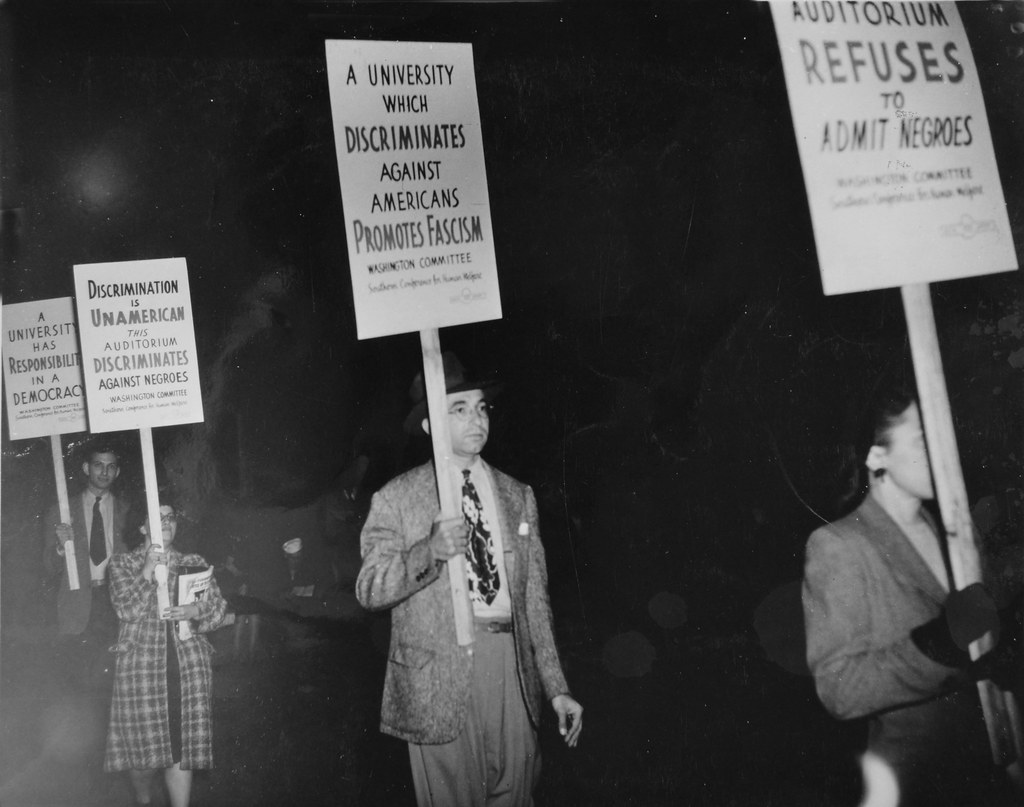
5. **Arkansas: Desegregation of Little Rock Schools (1957)**
The struggle for civil rights in America found a crucial battleground in Arkansas, specifically during the desegregation of Little Rock schools in 1957. Despite the U.S. Supreme Court’s landmark ruling in Brown v. Board of Education in 1954, which declared school segregation unconstitutional, widespread resistance persisted across many Southern states. Arkansas became a symbol of this fierce opposition.
In September 1957, nine African American students, known as the Little Rock Nine, attempted to attend classes at the previously all-white Central High School in Little Rock. They were met with immediate and forceful resistance from Governor Orval Faubus, who deployed the Arkansas National Guard to physically block their entry. This direct defiance of federal law created a constitutional crisis and captured international attention, highlighting the deep divisions within the nation.
The standoff persisted until President Dwight D. Eisenhower intervened, sending federal troops from the 101st Airborne Division to escort the Little Rock Nine into the school. This decisive action underscored the federal government’s commitment to enforcing the Supreme Court’s desegregation order. The students faced daily abuse and harassment but persevered, demonstrating immense courage and resilience in the face of systemic prejudice.
The desegregation of Little Rock schools proved to be a seminal moment in the civil rights movement, profoundly influencing the course of racial equality in America. It demonstrated that federal authority would be used to uphold civil rights, even against state resistance. Arkansas, through the courage of these nine students and the national response, played a vital role in challenging segregation and advancing the cause of justice in education.

6. **Alaska: Exxon Valdez Oil Spill (1989)**
Alaska, a state renowned for its breathtaking natural beauty and pristine wilderness, faced an unprecedented environmental catastrophe in 1989: the Exxon Valdez oil spill. This devastating incident occurred when the Exxon Valdez oil tanker crashed into Bligh Reef in Prince William Sound. The hull was pierced, releasing more than 10 million gallons of crude oil into the delicate marine ecosystem.
The initial disaster was compounded by severe weather, as a storm spread the oil even farther across Alaska’s southern coast. This massive slick blanketed hundreds of miles of shoreline, devastating fragile habitats and irrevocably altering the natural landscape. The remote and rugged geography of Prince William Sound made cleanup efforts incredibly challenging and prolonged, exacerbating the environmental damage.
The immediate impact on wildlife was catastrophic. Thousands of animals, including sea otters, seals, and migratory birds, died as a direct result of the oil contamination. The long-term effects continued to plague the ecosystem for decades, with many species struggling to recover and much of the coastline remaining polluted. The Exxon Valdez spill is now known as one of the most environmentally damaging events in history.
This tragic event sparked widespread public outrage and led to significant changes in environmental policy and regulations. It underscored the critical importance of corporate responsibility and stringent safety measures in industries operating in sensitive ecological areas. Alaska, as the site of this profound ecological disaster, became a focal point for environmental advocacy, reminding the nation and the world of the immense fragility of our planet’s natural treasures and the lasting consequences of human error.
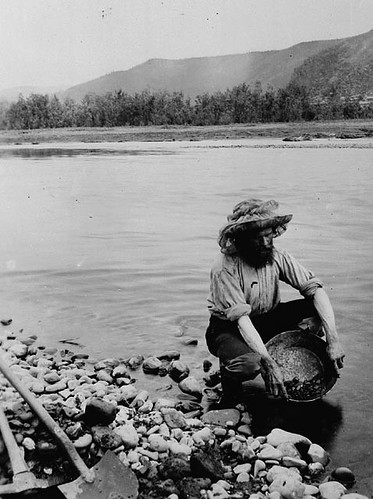
7. **California: Gold Rush (1849)**
California’s history is a testament to rapid transformation, a story indelibly marked by the Gold Rush of 1849. This extraordinary period began when James Marshall, a transplanted carpenter from New Jersey, discovered bits of gold in the American River near Sutter’s Mill. His discovery, initially kept quiet, soon ignited one of the greatest mass migrations and economic booms in global history.
The allure of instant wealth drew hundreds of thousands of prospectors, dubbed “Forty-Niners,” from across the United States and around the world to California. Miners extracted approximately $2 billion worth of gold during the Gold Rush, fueling an economic explosion that reshaped the region. This influx of people and capital transformed California almost overnight from a sparsely populated frontier into a bustling, dynamic territory.
The demographic impact was staggering: California’s non-native population grew from about 800 in early 1848 to an astonishing 100,000 by the end of 1849. This dramatic population surge fast-tracked California’s admission to the Union, and it officially became a state in 1850. The Gold Rush not only propelled California into statehood but also played a crucial role in westward expansion, fulfilling much of the vision of Manifest Destiny.
The Gold Rush cemented California’s identity as a land of opportunity, innovation, and rapid growth. It laid the foundation for the state’s future as an economic powerhouse, eventually leading to its prominence in agriculture, technology, and culture. California’s ability to adapt and envision the future, profoundly shaped by the Gold Rush, remains a testament to its enduring significance in the American narrative and its ongoing transformative impact on the nation.” , “_words_section1”: “1940

8. **Arizona: Miranda Rights Established (1966)**
Arizona’s legal landscape was fundamentally altered in 1966, giving rise to one of the most recognizable constitutional protections in American jurisprudence: the Miranda Rights. This pivotal legal precedent emerged from the case of Ernesto Miranda, who was arrested in Phoenix in 1963 on suspicion of kidnapping and ual assault. During his interrogation, Miranda confessed to the crimes, yet he had never been informed of his right to remain silent or his right to an attorney. His subsequent conviction brought into sharp focus the critical need for safeguards to protect the rights of individuals in police custody.
Miranda’s appeal eventually reached the U.S. Supreme Court, which delivered a landmark ruling in 1966. The Court determined that statements made by suspects during custodial interrogations were inadmissible as evidence unless they had been clearly informed of their Fifth Amendment rights. These rights include the right to remain silent, the warning that anything said can and will be used against them in a court of law, the right to an attorney, and that if they cannot afford an attorney, one will be provided for them. This decision, *Miranda v. Arizona*, profoundly reshaped police procedures nationwide.
The establishment of Miranda warnings ensured that individuals suspected of crimes were aware of their fundamental constitutional protections before being subjected to questioning. While Miranda himself was re-tried and convicted again in 1967 with admissible evidence, the legal standard set by his case became an enduring fixture in the American justice system. It mandated a standardized protocol for law enforcement, promoting fairness and preventing coerced confessions, thereby protecting the integrity of the judicial process across the country.
The impact of Miranda rights extends far beyond Arizona’s borders, influencing police training, legal practice, and public understanding of civil liberties. It underscored the Supreme Court’s commitment to balancing law enforcement’s investigative needs with the constitutional rights of individuals. This critical legal precedent, born out of a case in Phoenix, remains a vital component of due process, a constant reminder of the protections afforded to all citizens under American law, and a testament to Arizona’s significant contribution to legal history.

9. **Colorado: Legalization of Marijuana (2012)**
In 2012, Colorado emerged as a vanguard in a significant modern societal shift, becoming one of the first states in the nation to legalize recreational marijuana for adults over the age of 21. This momentous decision, enacted through a statewide vote, represented a dramatic departure from decades of federal prohibition and traditional drug policy. Prior to this, states had only cautiously permitted medical marijuana use, requiring specific prescriptions, making Colorado’s move a groundbreaking step into uncharted legal and social territory.
The legislative change in Colorado, alongside Washington state which also voted for legalization in 2012, ignited a broader national debate about cannabis reform. Colorado was particularly swift in establishing the regulatory framework for sales, effectively becoming the pioneering state to operationalize recreational marijuana commerce. This swift action set a precedent for other states considering similar reforms, demonstrating a practical model for taxation, distribution, and public safety in a newly legal cannabis market.
This bold shift in policy, while remaining in direct violation of federal laws prohibiting marijuana, has largely proceeded without federal intervention, signaling a de facto tolerance for state-level cannabis regulation. The “modern societal shift” encapsulated by Colorado’s decision has led to the creation of a burgeoning legal industry, generating significant tax revenues that the state has channeled into public services, including education and infrastructure. It transformed public perception, normalizing cannabis use for many and highlighting issues of personal liberty and economic opportunity.
Colorado’s move marked a profound cultural and economic turning point, illustrating the evolving attitudes towards marijuana within the United States. It initiated a cascade of similar legislative efforts in other states, contributing to a nationwide reconsideration of drug enforcement priorities and personal freedoms. As a trailblazer in this complex and controversial area, Colorado undeniably carved out a significant place for itself in the unfolding narrative of contemporary American social and legal transformation.

10. **Connecticut: First Colonial Constitution (1639)**
Long before the United States Constitution was drafted and ratified, Connecticut laid a foundational legal precedent with the adoption of the “Fundamental Orders” in 1639. This extraordinary document stands as America’s first colonial constitution, a groundbreaking framework for self-governance that deeply influenced the principles upon which the future nation would be built. Written primarily by lawyer Roger Ludlow, the Fundamental Orders provided a detailed structure for the colony’s government, establishing a system that prioritized the welfare of the community above individual interests.
The profound significance of the Fundamental Orders lies in its revolutionary assertion that governmental authority derived from “the free consent of the people.” This democratic principle was radical for its time, articulating a vision of popular sovereignty that would later become a cornerstone of American political philosophy. It delineated the powers and responsibilities of elected officials, created a representative assembly, and established rules for voting and judicial proceedings, all without reference to a monarch or external authority.
This early commitment to self-governance and popular consent earned Connecticut its enduring nickname, “the Constitution State.” The Fundamental Orders served as a practical blueprint for a civil government established by and for its citizens, demonstrating a vibrant spirit of political innovation. It showcased an advanced understanding of constitutional law, articulating a covenant between the people and their government, a relationship built on mutual consent and shared responsibility.
The legacy of Connecticut’s Fundamental Orders cannot be overstated. Its principles foreshadowed many of the democratic ideals enshrined in the U.S. Constitution approximately 150 years later, influencing concepts such as checks and balances and the importance of a written constitution. By bravely asserting the right to self-determination and the power of the people, Connecticut offered a potent example of democratic governance that resonated through generations, securing its place as a pivotal site in the development of American political thought.

11. **Delaware: First State to Join the U.S. (1787)**
Delaware proudly bears the title of “The First State,” a designation earned on December 7, 1787, when it unanimously ratified the U.S. Constitution, becoming the first of the original thirteen states to do so. This act of swift and decisive approval was far from a foregone conclusion, as many states at the Constitutional Convention harbored skepticism and debated extensively before committing to the new governing document. Delaware’s immediate acceptance, with a vote of 30-0, signaled an early and unequivocal commitment to the formation of a unified United States.
The unanimous vote by Delaware’s delegation underscored the state’s belief in the necessity of a strong federal government and a cohesive national identity. This pivotal moment came at a critical juncture in American history, as the fledgling nation grappled with the inadequacies of the Articles of Confederation. Delaware’s prompt ratification provided crucial momentum for the new Constitution, encouraging other states to follow suit and fostering a sense of solidarity that was essential for the nascent union’s survival.
While larger and more populous states like Virginia and New York deliberated until 1788, and North Carolina and Rhode Island held out even longer—demanding the introduction of the Bill of Rights and eventually becoming the last to approve in 1789 and 1790, respectively—Delaware’s early leadership was instrumental. Its swift action demonstrated confidence in the new framework and helped to build the necessary consensus for the Constitution’s ultimate adoption, setting a vital precedent for national unity and governmental stability.
Delaware’s role as “The First State” is more than a historical footnote; it symbolizes its enduring commitment to the foundational principles of American democracy. This act of ratification cemented its place in the national narrative, showcasing its progressive outlook and belief in the collective future of the United States. Its legacy is a testament to the vision of its founders and its lasting contribution to the very birth of the American republic, a moment of profound legal and political transformation.

12. **Florida: Launch of Apollo 11 (1969)**
Florida etched its name into the annals of human endeavor with the launch of Apollo 11 in 1969, an event that heralded a monumental advancement in space exploration and captured the imagination of the entire world. From Cape Canaveral – then known as Cape Kennedy – at the Kennedy Space Center, the Saturn V rocket roared to life on July 16, 1969, carrying astronauts Neil Armstrong, Buzz Aldrin, and Michael Collins on their historic journey to the moon. This launch was not merely a technological feat but a profound symbol of American ingenuity and determination in the face of the Cold War space race.
The choice of Cape Canaveral as the primary launch site for NASA’s human spaceflight missions was a strategic one, leveraging geographical advantages that benefited from Earth’s rotational speed, which provided an eastward boost for rockets. The coastal location also offered the critical safety measure of launching over the Atlantic Ocean, minimizing risks to populated areas in case of an anomaly. These factors combined to make Florida the nexus of America’s ambitious space program, a place where dreams of lunar landings were meticulously planned and executed.
The Apollo 11 mission culminated in Neil Armstrong and Buzz Aldrin becoming the first humans to walk on the moon, a moment watched by an estimated 600 million people worldwide. This achievement was a defining moment of the 20th century, inspiring generations of scientists, engineers, and explorers. Florida, as the literal launching pad for this unparalleled triumph, became synonymous with innovation, scientific advancement, and the relentless pursuit of discovery, pushing the boundaries of what humanity believed possible.
The legacy of Apollo 11 and Florida’s role in it continues to reverberate, anchoring the state’s identity as a leader in aerospace and technological innovation. The Kennedy Space Center remains an active and vital site for space exploration, a beacon of scientific progress and a popular tourist destination that allows visitors to connect with the history of humanity’s journey beyond Earth. Florida’s contribution to this “advancement in space exploration” is not just a chapter in its history but a cornerstone of its global reputation as a hub for future-defining achievements.

13. **Hawaii: Attack on Pearl Harbor (1941)**
Hawaii’s serene beauty was shattered on December 7, 1941, by the surprise attack on Pearl Harbor, an event that irrevocably altered the course of American history and plunged the United States into World War II. This devastating assault by the Imperial Japanese Navy Air Service, targeting the U.S. Pacific Fleet at its base near Honolulu, claimed thousands of lives, primarily military personnel, and destroyed or severely damaged numerous warships and aircraft. The suddenness and scale of the attack left an indelible mark on the national psyche, galvanizing a previously isolationist nation into full wartime mobilization.
Prior to Pearl Harbor, the United States had largely maintained a stance of neutrality in the global conflict raging in Europe and Asia. However, the attack, described by President Franklin D. Roosevelt as “a date which will live in infamy,” immediately shattered any lingering illusions of American detachment. Within hours, the U.S. declared war on Japan, and soon after, Germany and Italy declared war on the United States, effectively drawing America into the global conflagration. This single event transformed the U.S. from a hesitant observer into a central participant, marking a dramatic turning point in global history.
The attack underscored Hawaii’s crucial strategic importance as a military outpost in the Pacific and fundamentally reshaped its identity within the American narrative. It highlighted the vulnerabilities of the nation and prompted an unprecedented unification of public will and industrial effort. The sacrifices made at Pearl Harbor became a powerful symbol of American resilience and resolve, fueling the nation’s determination to fight and win the war.
Even decades later, Pearl Harbor remains a somber and revered site, serving as a powerful memorial to those who perished and a stark reminder of the costs of war. Hawaii, through this singular and tragic event, holds a unique and profound place in America’s memory, representing both a moment of immense national pain and the catalyst for a united national response that ultimately led to Allied victory. The attack profoundly shaped America’s global role and its understanding of international relations, making it a truly transformative event in the state’s, and the nation’s, history.
These thirteen pivotal events, from the colonial foundations of Connecticut and Delaware to the modern societal shifts in Colorado, and from the battlefields of Pennsylvania to the scientific frontiers of Florida and the tragic catalyst of Hawaii, collectively underscore the diverse and dynamic history woven into the fabric of the United States. Each state, through its unique struggles, innovations, and contributions, has played an indispensable role in shaping America’s journey. By exploring these defining moments, we gain a richer understanding of the national narrative, recognizing the individual imprints that together form the complex and compelling story of a nation perpetually in the making.


